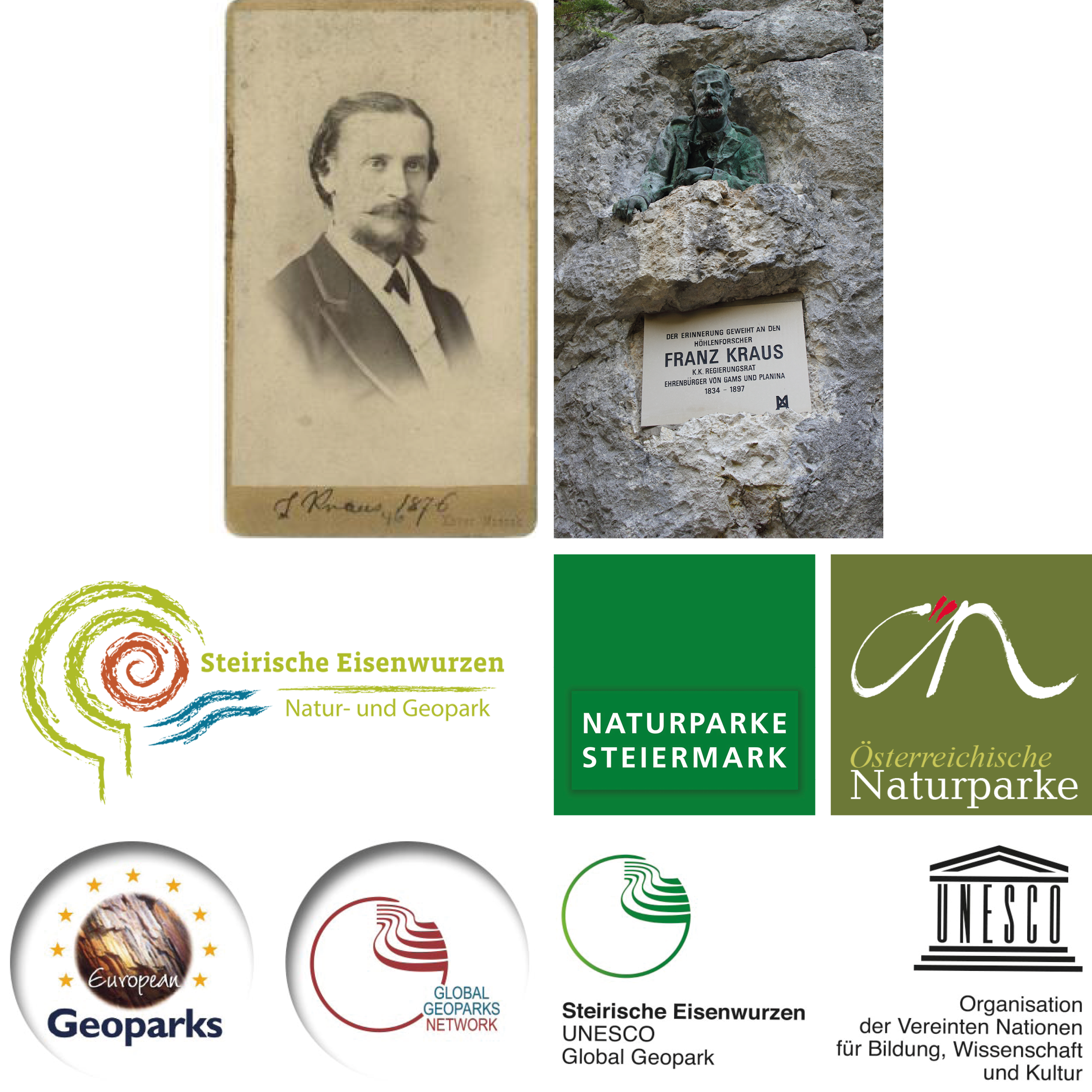
Isolated efforts of conservation and geotourism that develop into joint umbrella organizations like the Association of Austrian Nature Parks and/or work with larger conservation organizations such as the IUCN or UNESCO.
The spring water supply of Vienna comes predominantly from the Styrian Eisenwurzen Nature Park. You can even go to the Wildalpen Spring Water Museum and see the Kläffer spring. Historically, this region was settled in the 11th century and became an iron mining region from the 16th to the 19th century when it transitioned into a tourism focused region. Franz Kraus was an important figure in this transition as he was a very active member in the geological and science field and became a correspondent of the Federal Geological Institute (GBA). As he became more involved in caves and became a speleologist, he brought the Österreichische Touristenklub (OTK) in to collaborate with the caving association he co-founded. Within months he bought a cave and created a tunnel to it, opening it to the public in 1881. By 1883, a small power station was built to make it the first electrically lit cave open to the public and during this the locals decided to make Kraus an honorary member of their community and named it Kraushöhle. After this, Kraus continued to guide the speleology department of the OTK to survey the water conditions in the Carniola region which would go on to influence the melioration projects in the Karst Area.
In 1959, the Österreichisches Wasserrechtsgesetz was passed regulating and defining water. Although nature protections weren’t explicitly mentioned, this policy set precedents by requiring sustainable management especially in regards to water pollution. However, in the Styria region they had already established hunting laws as early as 1947, limiting hunting grounds and species allowed. In the Styria Land Use Planning Law of 1974, conservation and protections for indigenous flora and fauna were established. Then in 1976, the Styrian Nature Conservation Act created 36 Landscape Protection Areas which are not as protected as Nature Parks but are also designated by the state. Soon after, the Styria Mountain and Nature Rescue Service were established in 1977 through local legislation to be in charge of promoting the protection of nature. Most other states did not pass legislation regarding Landscape Protection Areas until the 2000s, after the Nature Parks formed the Verband der Naturparke Österreichs (VNO) in 1995.
← Back to Lexicon
The spring water supply of Vienna comes predominantly from the Styrian Eisenwurzen Nature Park. You can even go to the Wildalpen Spring Water Museum and see the Kläffer spring. Historically, this region was settled in the 11th century and became an iron mining region from the 16th to the 19th century when it transitioned into a tourism focused region. Franz Kraus was an important figure in this transition as he was a very active member in the geological and science field and became a correspondent of the Federal Geological Institute (GBA). As he became more involved in caves and became a speleologist, he brought the Österreichische Touristenklub (OTK) in to collaborate with the caving association he co-founded. Within months he bought a cave and created a tunnel to it, opening it to the public in 1881. By 1883, a small power station was built to make it the first electrically lit cave open to the public and during this the locals decided to make Kraus an honorary member of their community and named it Kraushöhle. After this, Kraus continued to guide the speleology department of the OTK to survey the water conditions in the Carniola region which would go on to influence the melioration projects in the Karst Area.
In 1959, the Österreichisches Wasserrechtsgesetz was passed regulating and defining water. Although nature protections weren’t explicitly mentioned, this policy set precedents by requiring sustainable management especially in regards to water pollution. However, in the Styria region they had already established hunting laws as early as 1947, limiting hunting grounds and species allowed. In the Styria Land Use Planning Law of 1974, conservation and protections for indigenous flora and fauna were established. Then in 1976, the Styrian Nature Conservation Act created 36 Landscape Protection Areas which are not as protected as Nature Parks but are also designated by the state. Soon after, the Styria Mountain and Nature Rescue Service were established in 1977 through local legislation to be in charge of promoting the protection of nature. Most other states did not pass legislation regarding Landscape Protection Areas until the 2000s, after the Nature Parks formed the Verband der Naturparke Österreichs (VNO) in 1995.
← Back to Lexicon
Organizational network adoption and structure originating from Kraushöhle at Steirische Eisenwurzen
Sources: xx
Sources: xx
